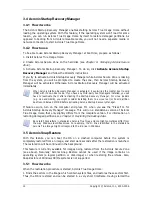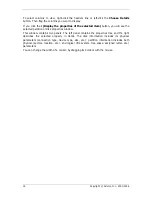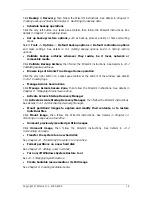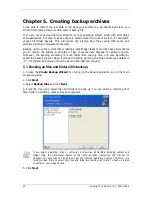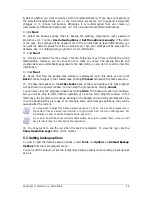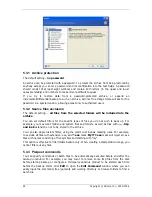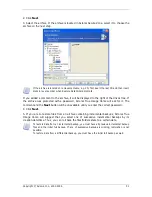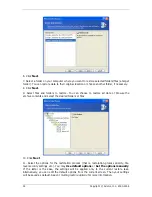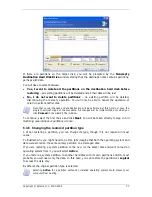
Creating images directly on CD-R/RW or DVD+R/RW might take considerably more time
than it would on a hard disk.
5.3.7 File-level security settings
Preserve files’ security settings in archives
By default, files and folders are saved in the archive with their original Windows security
settings (i.e. permissions for read, write, execute and so on for each user or user group, set
in file
Properties -> Security
). If you restore a secured file/folder on a computer without
user, specified in the permissions, you may not be able to read or modify this file.
To completely eliminate this kind of problem, you can disable preserving files’ security
settings in archives. Then the restored files/folders will always inherit the permissions from
the folder to which they are restored (parent folder or disk, if restored to the root).
Alternatively, you can disable files’ security settings during restoration, even if they are
available in the archive (see
6.4 4 File-level security
settings below). The result will be the
same.
.
In archives, store encrypted files in decrypted state
The default setting –
disabled
.
If you do not use the encryption feature available in Windows XP operating systems, simply
ignore this option. (Files/folders encryption is set in
Properties -> General -> Advanced
Attributes -> Encrypt contents to secure data
).
Check the option if there are encrypted files in the backup and you want them to be
accessed by any user after restore. Otherwise, only the user who encrypted the files/folders
will be able to read them. Decryption may also be useful if you are going to restore
encrypted files on another computer.
These options relate only to file/folders backup.
5.3.8 Media components
The default setting –
disabled
.
When backing up to removable media, you can make this media bootable by writing to it
additional components. Thus, you will not need a separate rescue disk.
Choose the basic components, necessary for boot and restoring data, on the
General
tab.
The
Acronis One-Click Restore
is a minimal addition to your rescue media, allowing one-
click data recovery from an image archive, stored on this media. This means that at boot
from the media and clicking “restore” all data will be silently restored to the original place.
No options or selections like resizing partitions will be possible.
If you want more functionality during restoration, write a standalone version of
Acronis
True Image Home
to the rescue disk. Then you will be able to configure the restore task
using Restore Data Wizard, use Acronis Snap Restore etc.
Under
Advanced
tab you can select full, safe or both Acronis True Image Home loader
version. The safe version does not have USB, PC card or SCSI drivers and is useful only in
case the full version does not load. If you have other Acronis products, such as Acronis Disk
Director Suite, installed on your computer, the bootable versions of these programs’
components will be offered as
Advanced
as well.
28 Copyright © Acronis, Inc., 2000-2006

